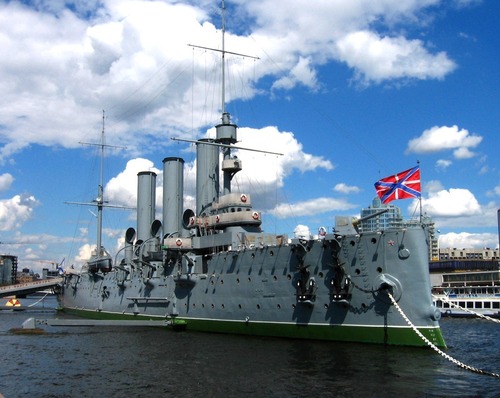When World War I broke out in August 1914 it was decided to change the name of the Russian capital from the Germanic Saint Petersburg for more Russian equivalent, Petrograd. Germany was now an enemy of Russia and all forces in the country had to be employed to defeat it. Most of the industry of the city began to work to support the war effort. Construction work stopped.
The war is not going well for Russia. The tsarist government was discredited and political tensions began to rise. To further aggravate the situation, food supplies were scarce significantly towards the end of 1916. Located in the northwestern part of the Russian Empire, Petrograd was supplied through the rail network, but suffered serious failures during the war, making it increasingly difficult supply.
Petrograd entered the new year with its people angry who waited in long lines to buy food in the shops of the city. The combination of social unrest and the war led to the revolution of February 1917 and the abdication of Nicholas II. The political and economic crisis continued throughout 1917 and in the autumn the Bolshevik party, led by Vladimir Lenin, seized political power. On October 25 (November 7) 1917, shot blanks fired from 'cruiser Aurora gave the signal to workers and soldiers to storm the Winter Palace, the current residence of provisional democratic government, but totally inefficient. Most of the ministers were arrested and began the 73 long years of Communist rule.
At the beginning of 1918 the Civil War broke out (1918-1921) and the revolutionary workers and soldiers became the core of the Red Guard, later converted into a Red Army. As the men were leaving the city for the fronts of the civil war, a significant part of the population migrated to the countryside, where families were more resources to survive. The population dropped from 2.3 million in 1917 to 722,000 at the end of 1920.
At the beginning of 1918 the German troops were so close to Petrograd that the Bolshevik government under Vladimir Lenin decided to move the capital to Moscow, which was still far from German front. Petrograd was abandoned by the government and many of the street names were changed according to "revolutionary fashion". Palace Square became Piazza Uritski (Bolshevik politician assassinated) and the Nevsky Prospekt became the Perspective of 25 October (after the October Revolution).
A number of monuments were erected to remember the revolution, but most were poorly designed and constructed, and not last long. In 1924 the city's name was changed to Leningrad.
Finland Station (Finlyandsky Vokzal)
It became famous as the place where Lenin, on his return to St. Petersburg from a trip to Switzerland 3 April 1917, he made his famous speech to the modest crowd gathered. The station is located on the north bank of the Neva River, about 2 km north of Nevsky Prospekt.
The cruiser "Aurora"
The historic ship Aurora has been turned into a floating museum moored. The cruiser, built in St. Petersburg between 1897 and 1900, took an active part in the Russo-Japanese War of 1904 to 1905 and participated in the battle Tsusima, where most of Russia's Pacific Fleet was destroyed. After the war, the ship was used for training military personnel and during the October Revolution of 1917 gave the signal (firing a shot blanks) to the siege of the Winter Palace.
During the Second World War and the siege of Leningrad they were disassembled and used the guns at the forefront of the city's defenses. After the war, the ship has been carefully restored and used as a museum and training ship for cadets from the nearby Nakhimov Navy School.
Museum of Political History
The purpose of this museum is to show the political history of Russia to this day, his collection is always continuously updated. The building that houses the museum has played a significant role in history. This charming art nouveau palace was originally built for Mathilda Kshesinskaya, prima ballerina at the Mariinsky before the revolution. Designed by Alexander von Gogen, it was completed in 1906.
In 1917, the building was confiscated by the Bolsheviks and turned into their headquarters. It became the center of their revolutionary activities; Lenin made a historic speech from one of the balconies after his arrival in the city.
In 1957 he became the Museum of the Revolution and now also contains objects of the protagonists of the revolution, including their personal belongings, documents, posters, brochures and banners.
Of particular interest are the belongings of politicians, statesmen, scientists and military leaders.



